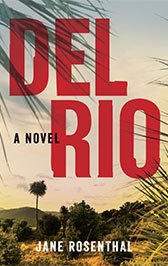In storytelling, the final chapter is often the clincher, the emotional punch that accentuates the narrative. Different ways to end a book — whether happy, sad, or somewhere in between — carry significant emotional impact and shape readers’ reactions long after they turn the last page. It’s this final touch that transforms a story into a full novel, resonating with the reader and enhancing the overall literary experience.
Happy, Sad, Unexpected… Something else?
Authors have a vast array of types of book conclusions at their disposal, each bringing a unique closure to a story. However, the most effective conclusions are resonant and satisfying, while also delivering a touch of the unexpected. These endings may not tie up all loose ends, but they allow readers to feel the story concluded as it should. As Frank Herbert insightfully remarked, “There is no real ending. It’s just the place where you stop telling the story.”
This is especially salient for those writing series, where the ending of one book is simply a pause before the continuation into the next. Even in standalone books, endings that leave some loose ends can reflect the ongoing nature of life and keep readers thinking well beyond the final page.
Jane's second novel!

A once-thriving Central Valley farm town, is now filled with run-down Dollar Stores, llanterias, carnicerias, and shabby mini-marts that sell one-way bus tickets straight to Tijuana on the Flecha Amarilla line. It’s a place . . .
Whether happy, sad, poignant, bittersweet or a mix of emotions, these endings also illuminate how characters have changed, underscoring the journey they’ve experienced. This delicate balance transforms a story into a novel, leaving a lasting emotional impact long after readers close their book.
Not all stories end the same way
The final chapter, paragraph, or even the last few pages of how a book ends hold the power to redefine the entire narrative. Books by authors like Jane Rosenthal, particularly those set in vibrant locales like Mexico, often explore rich, complex conclusions that reflect the intricacies of her characters and settings. Rosenthal’s Mexico novels, among others, are enriched by the author’s deep understanding of Mexico City’s customs, history, and lifestyle, as well as the cultural differences between the U.S. and Mexico. From California’s Central Valley to deep in the Mexican jungle, her novels unfold at a brisk pace, taking readers on a journey of intrigue, danger, and glamor.
